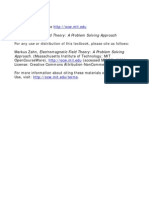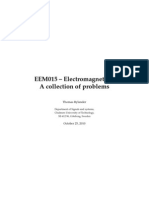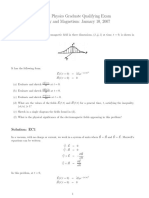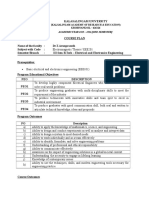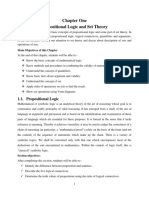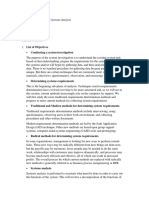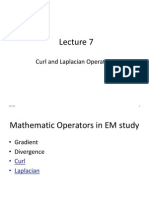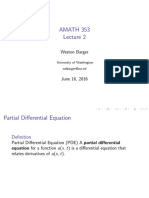0% found this document useful (0 votes)
152 views4 pagesComputational Electromagnetics - Exercise Sheet 1
1) The transmission conditions for the magnetic vector potential A across the boundary of a conducting ball in an alternating magnetic field take the form of A being continuous and the normal derivative of A being continuous.
2) The solution φ of an electrostatic problem minimizes the energy functional by satisfying the weak formulation of the governing equation.
3) In the case of eddy currents with no external current density or magnetization, the equation for the magnetic vector potential A in the Coulomb gauge takes the form of the vector potential evolving according to the inhomogeneous wave equation with source given by the negative gradient of the electric potential.
Uploaded by
zkalel_mCopyright
© © All Rights Reserved
We take content rights seriously. If you suspect this is your content, claim it here.
Available Formats
Download as PDF, TXT or read online on Scribd
0% found this document useful (0 votes)
152 views4 pagesComputational Electromagnetics - Exercise Sheet 1
1) The transmission conditions for the magnetic vector potential A across the boundary of a conducting ball in an alternating magnetic field take the form of A being continuous and the normal derivative of A being continuous.
2) The solution φ of an electrostatic problem minimizes the energy functional by satisfying the weak formulation of the governing equation.
3) In the case of eddy currents with no external current density or magnetization, the equation for the magnetic vector potential A in the Coulomb gauge takes the form of the vector potential evolving according to the inhomogeneous wave equation with source given by the negative gradient of the electric potential.
Uploaded by
zkalel_mCopyright
© © All Rights Reserved
We take content rights seriously. If you suspect this is your content, claim it here.
Available Formats
Download as PDF, TXT or read online on Scribd
/ 4






